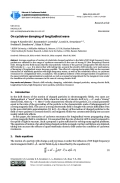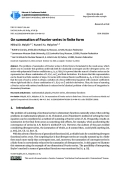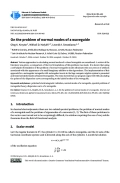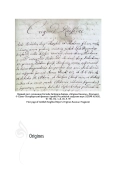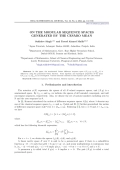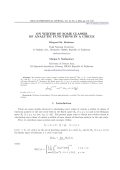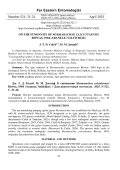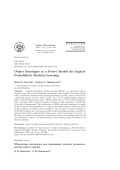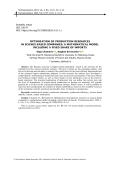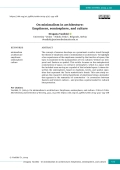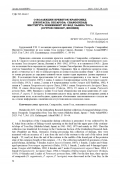Average equations of motion of relativistic charged particles in the field of HF (high frequency) wave packets are obtained in the range of cyclotron resonance in the case of strong LF (low frequency) electric field. Strong electric field means that the characteristic velocity of the particle comparable with the electric drift velocity (
The problem of summation of Fourier series in finite form is formulated in the weak sense, which allows one to consider this problem uniformly both for classically convergent and for divergent series. For series with polynomial Fourier coefficients
Various approaches to calculating normal modes of a closed waveguide are considered. A review of the literature was given, a comparison of the two formulations of this problem was made. It is shown that using a self-adjoint formulation of the problem of normal waveguide modes eliminates the occurrence of artifacts associated with the appearance of a small imaginary additive to the eigenvalues. The implementation of this approach for a rectangular waveguide with rectangular inserts in the Sage computer algebra system is presented and tested on hybrid modes of layered waveguides. The tests showed that our program copes well with calculating the points of the dispersion curve corresponding to the hybrid modes of the waveguide.
Публикуемый текст является переводом с латинского языка статьи профессора Петербургской академии наук Готлиба Зигфрида Байера (1694-1738). Она была впервые опубликована после смерти автора в журнале «Commentarii Academiae Scientiarum Imperialis Petropolitanae» (1741). В ней нашли отражение взгляды Байера на вопросы происхождения русского народа, взаимодействия русских и скандинавов, возникновения именования «Русь». Байер рассматривал также некоторые аспекты истории славянских народов, разбирал различные формы этнонимов народов Восточной Европы, критиковал легендарные сведения о происхождении славян. Кроме того, его занимал вопрос формы правления у славян, интересовали титулы славянских и русских правителей, социальная терминология. Байер привлекает широкий круг византийских, древнерусских, латиноязычных, восточных и скандинавских источников, подвергает критике как средневековых историописателей, так и авторов XVI-XVII вв., увлеченных мифотворчеством. Статья не была полностью закончена автором, тем не менее, она отражает идеи ученого, демонстрирует присущий ему хороший латинский язык, ироничный стиль и обширную эрудицию. В XVIII в. латинский текст статьи получил определенную известность и даже удостоился пространных критических комментариев В. К. Тредиаковского. Позднее статья была фактически забыта и на русский язык не переводилась. Предлагаемый перевод выполнен с оригинального издания. Комментарий поясняет многочисленные ссылки Байера на источники и литературу, а также дает представление о дискуссиях, связанных с отдельными вопросами, затронутыми в статье. Публикация сопровождается вступительной статьей, содержащей сведения о подготовке автором текста «Origines Russicae», о некоторых аспектах концептуальных позиций и историографической судьбе публикации Байера.
In this paper, the seminormed Cesàro difference sequence space ℓ(j, q, g, r,μ, Δ(s)t,) is defined by using the generalized Orlicz function. Some algebraic and topological properties of the space ℓ(j, q, g, r,μ, Δ(s)t,) are investigated. Various inclusion relations for this sequence space are also studied.
We calculate exact values of some n-widths of the class
The type material of Myrmarachne calcuttaensis Biswas, 1984 kept at the Zoological Survey of India, Kolkata, has been studied. M. calcuttaensis syn. n. is recognized as a junior synonym of M. melanocephala MacLeay, 1839
Logical-probabilistic machine learning (LPML) is an AI method able to explicitly work with a priori knowledge represented in data models. This feature significantly complements traditional deep learning knowledge acquiring. Object ontologies are a promising example of such a priori models. They are an expanded logical analog of object oriented programming models. While forming the core of the bSystem platform, object ontologies allow solving the applied problems of high complexity, in particular, in the field of management. The combination of LPML and object ontologies is capable of solving the forecasting problems, the tasks of automated control, problem detection, decision making, and business process synthesis. The proximity of object ontologies to the LPML formalism due to the same semantic modeling background makes it possible to integrate them within a single hybrid formal system, which is presented in this paper. In the paper we introduce the approach to integration of these two formalisms and provide some algorithmic basis for the implementation of the resulting hybrid formalism on the bSystem platform.
The Russian economy is highly import-dependent, which is also relevant for the enterprises of the science-intensive industry. The later is based on the emerging realities, and strives to develop and introduce a strategy that would allow for the most efficient implementation of the planned import substitution program. In this research the authors have developed a comprehensive mathematical model that takes into account the peculiarities of the local labour and technical capital market, as well as their impact on the production costs of the sciencebased enterprise. The practical application of indicators that can define the current state and the level of dependence of science-based production on foreign raw materials will provide grounds for a revision of the existing development strategy. What is more, it will be possible to take into due consideration the mission of import substitution, based on the available resources of the enterprise and the maximum permissible share of imports in production.
The concept of essence develops as a prominent creative trend through the theme of emptiness seen in minimalism in architecture. To highlight a few experiences of the emptiness created by the function of space, this topic is examined in the juxtaposition of two cultures: Western as temporal and Eastern as spatial. This article focuses on the metaphorical connotations of space, on Lotman’s semiosphere, which is a space with the included area serving as a symbol of the included space. Lotman describes the semiosphere, based on dualisms, levels, and spatial oppo-sites that represent the Tartu semiotician’s thesis. This case study examines the research’s initial hypothesis of emptiness being a metaphor that appears in the semantics of connotation – in the connection between Eastern and Western culture ‒ and provides a spatial model for cultural interpretation.
An analytical method of solving the wave equation describing the oscillations of systems with moving boundaries is considered. By changing the variables that stop the boundaries and leave the equation invariant, the original boundary value problem is reduced to a system of functional-difference equations, which can be solved using direct and inverse methods. An inverse method is described that makes it possible to approximate quite diverse laws of boundary motion by laws obtained from solving the inverse problem. New particular solutions are obtained for a fairly wide range of laws of boundary motion. A direct asymptotic method for the approximate solution of a functional equation is considered. An estimate of the errors of the approximate method was made depending on the speed of the boundary movement.
A description of the Crangonidae shrimp collection is presented. It was collected by Dr. K. Sakai from catches of fishing vessels operating on the shelf and the upper part of the continental slope of Tosa Bay (Shikoku Island, Japan) in 1961-1962, 1979 and mainly in 1963. Then this collection was transferred for storage to the Crustacean Section of the Zenkenberg Research Institute (Frankfurt am Main, Germany). During processing this collection of shrimps, they were measured with an accuracy of 1 mm from the end of the rostrum to the end of the telson (total length - TL) and (or) from the end of the rostrum to the middle of the dorsal part of the posterior edge of the carapace (length of the carapace - CL). The collection included 64 specimens of crangonid shrimp, including: 5 females Aegeon lacazei (Gourret, 1887); 1 female, 2 males and 4 damaged specimens Neocrangon sagamiensis (Balss, 1913); 1 female, 2 males and 4 damaged specimens Crangon dalli Rathbun, 1902; 4 females and 7 males Parapontocaris aspera Chace, 1984; 1 female Parapontocaris laevigata Chace, 1984; 12 females of Metacrangon longirostris (Yokoya, 1933); 19 females and 2 males of Pontocaris pennata Bate, 1888. For the first time, three species of crangonids (N. sagamiensis, P. aspera, P. laevigata) were discovered in the Tosa Bay. In the description of each species, in addition to length measurement data and sex determination, if necessary, the justification of the taxonomic status of the species is given, as well as information about the presence or absence of eggs on the pleopods of females.
